|
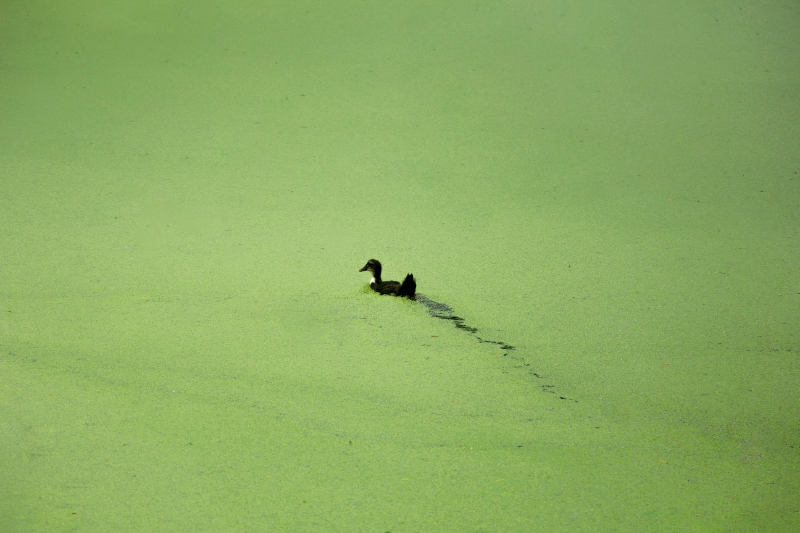
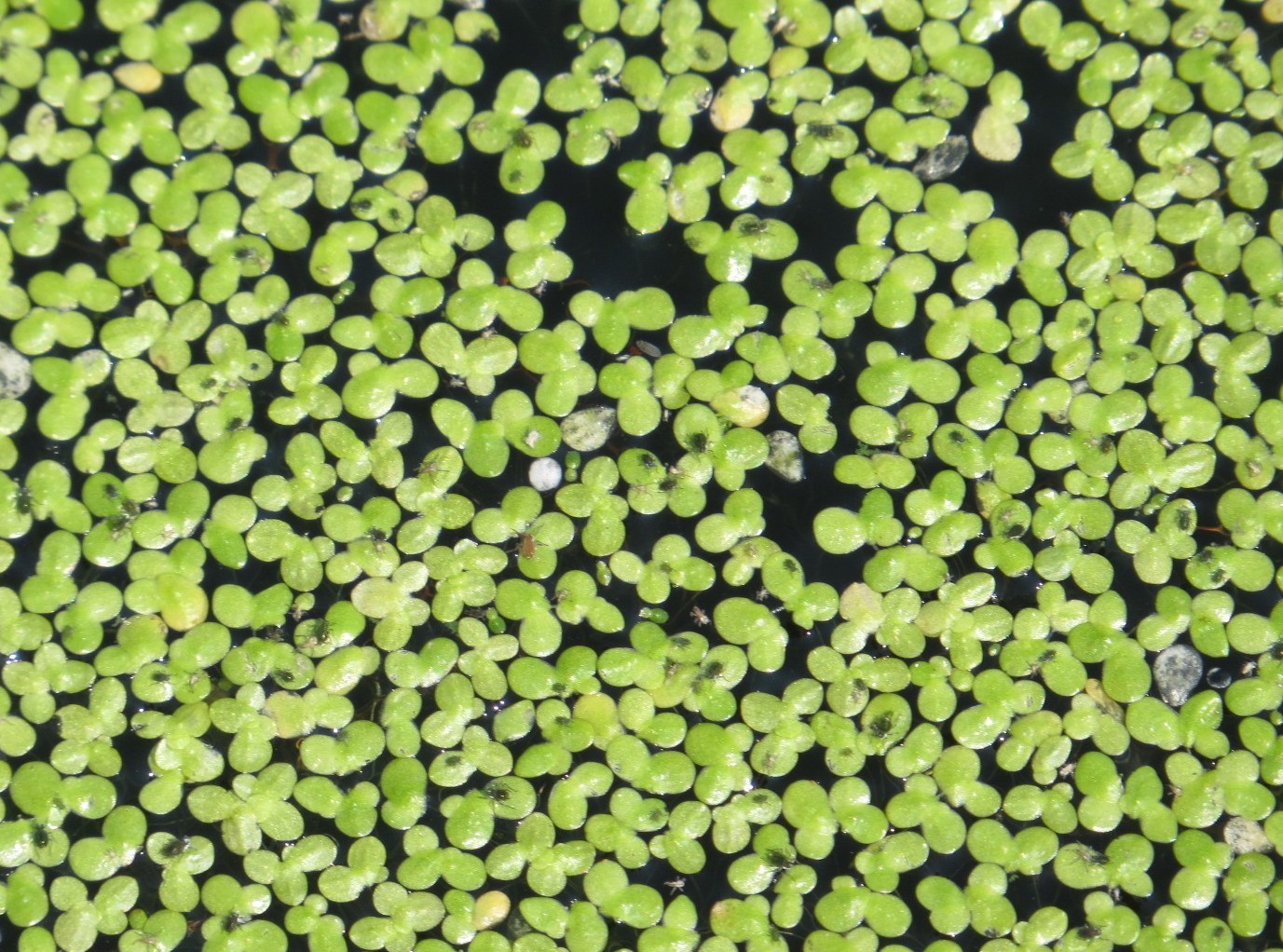
|
Duckweed
- Often thought to be algae, duckweed is actually an aquatic plant that floats on the surface of water bodies.
- Individual plants range in size from 2-5 cm and have hair-like roots on their undersides.
- Typically found in high nutrient waters and can be spread by waterfowl, small mammals and moving water.
- Common in small lakes or ponds and is an important food source for waterfowl and can be used as shelter by fish fry and frogs.
|
|
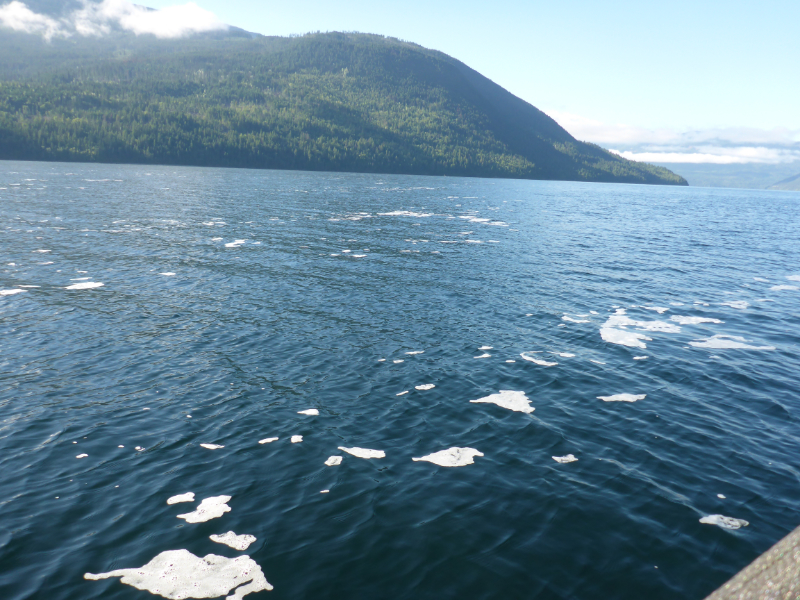
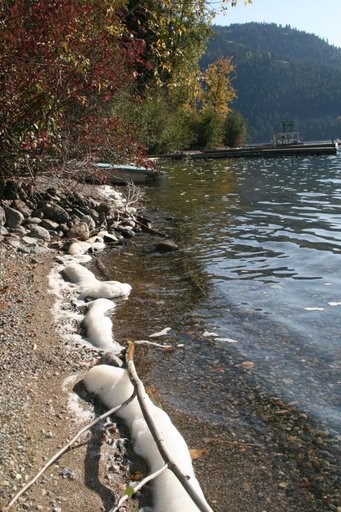
|
Foam
- When organic substances decompose in water they often release compounds called surfactants.
- These compounds lower the surface tension between the water and the air allowing them to mix more readily, creating bubbles.
- The bubbles congregate due to currents, wind, and wave and will naturally dissipate.
- Natural foam may smell fishy, earthy, or lack a strong smell, and breaks apart easily when disturbed.
|
|
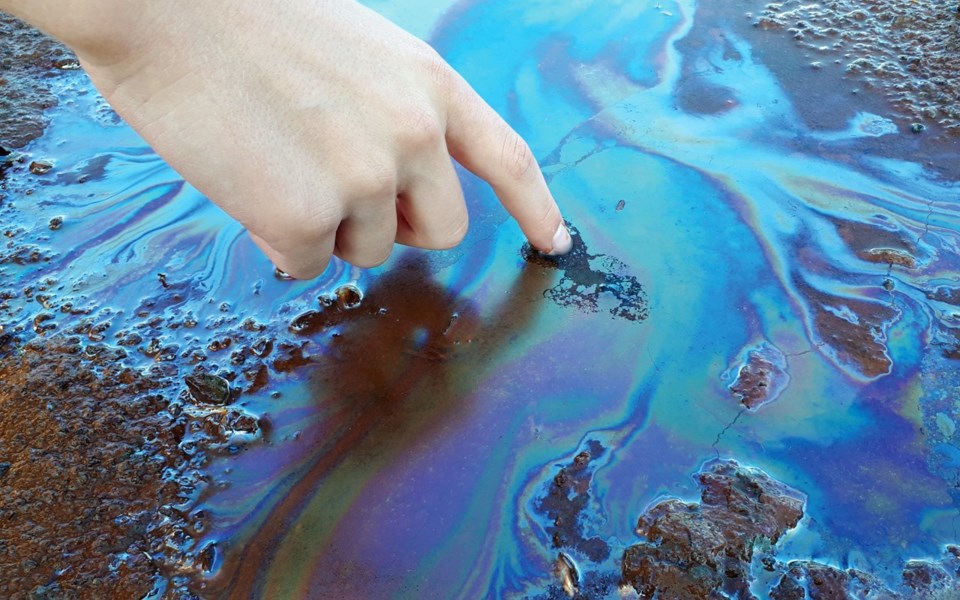
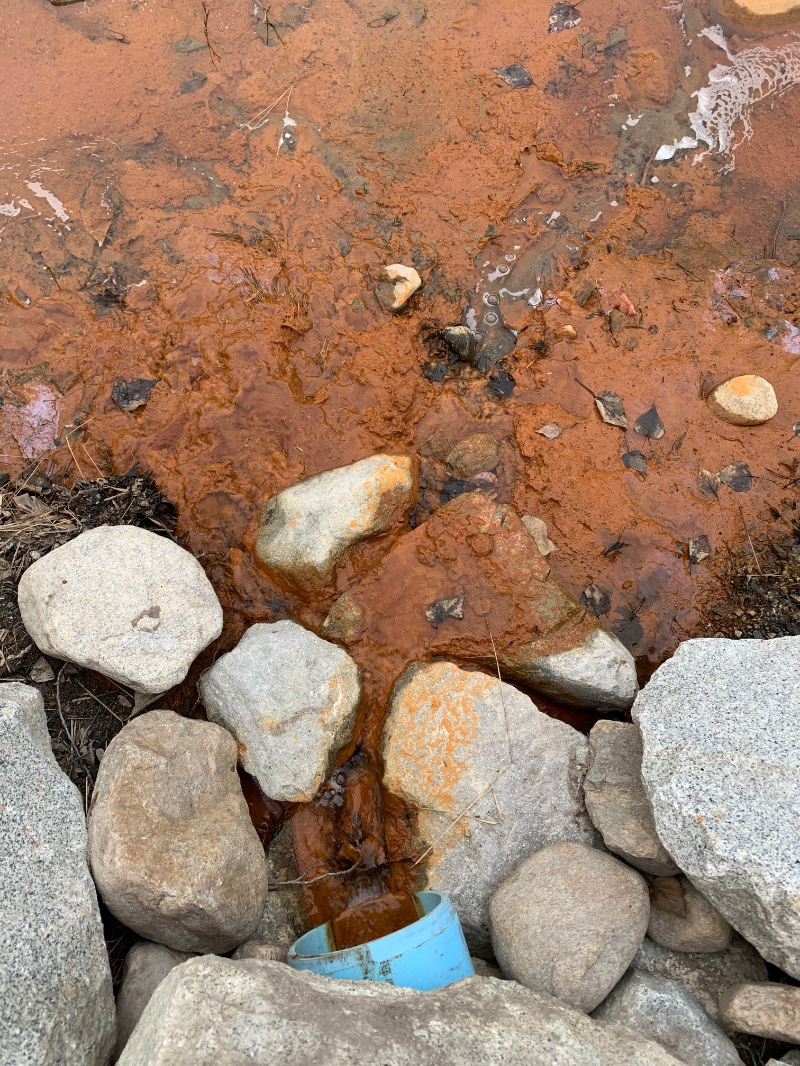
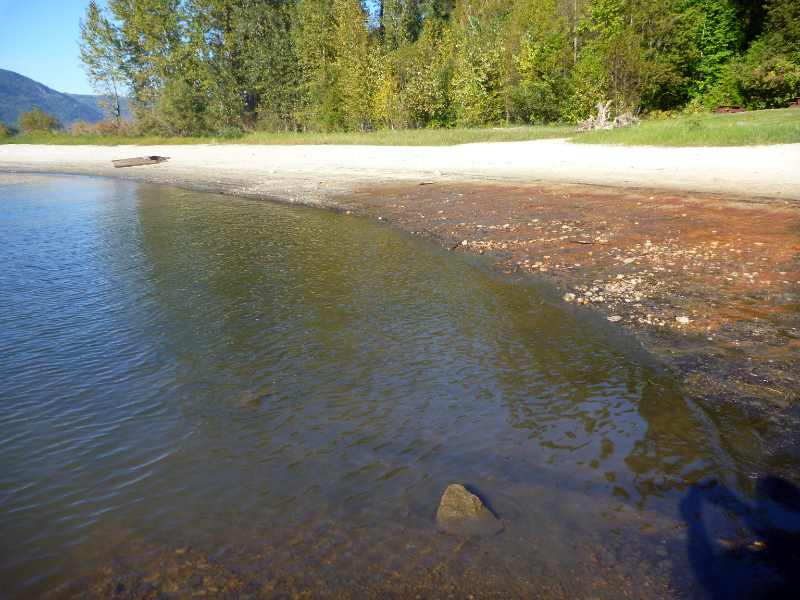
|
Iron-oxidizing bacteria
- Iron-oxidizing bacteria are found in iron rich waters and get the energy they need to live and reproduce from oxidizing dissolved iron.
- These bacteria convert the dissolved iron into a reddish-brown gelatinous slime or fuzz that can form on lake shores and stream beds and cause staining of rocks.
- Often there will be an oily looking sheen associated with these bacteria and may be mistaken for spilled oil or gas.
- If you poke the sheen with a stick, and it swirls immediately back together, it is likely petroleum pollution.
- If the sheen breaks apart easily and does not flow back together right away, it is likely from a natural source.
|
|
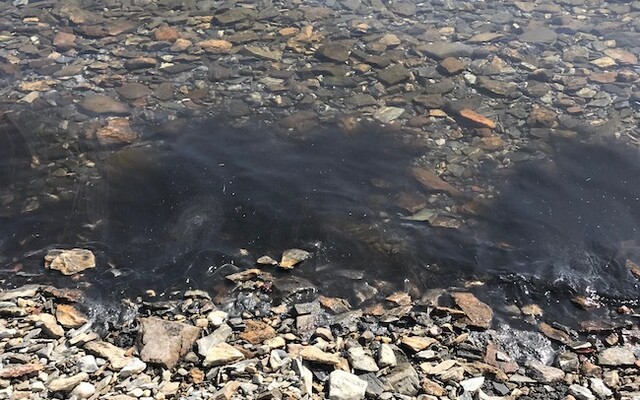
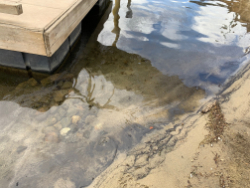
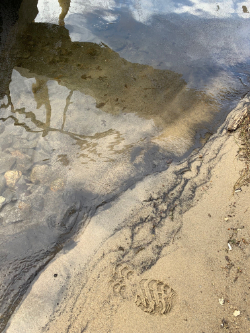 |
Charcoal
- Charcoal is the carbon and ash remains from burned plant and animal matter.
- It appears as a fine black powder, or as black porous solids of varying size.
- Charcoal in aquatic environments may come from sediments or as a result of bank erosion, particularly in areas where large scale fires have occurred, or may be washed in by overland flow from nearby camp or wildfires.
- Charcoal is odourless and tasteless, and may leave black streaks when you rub the particles between your fingers.
|
|
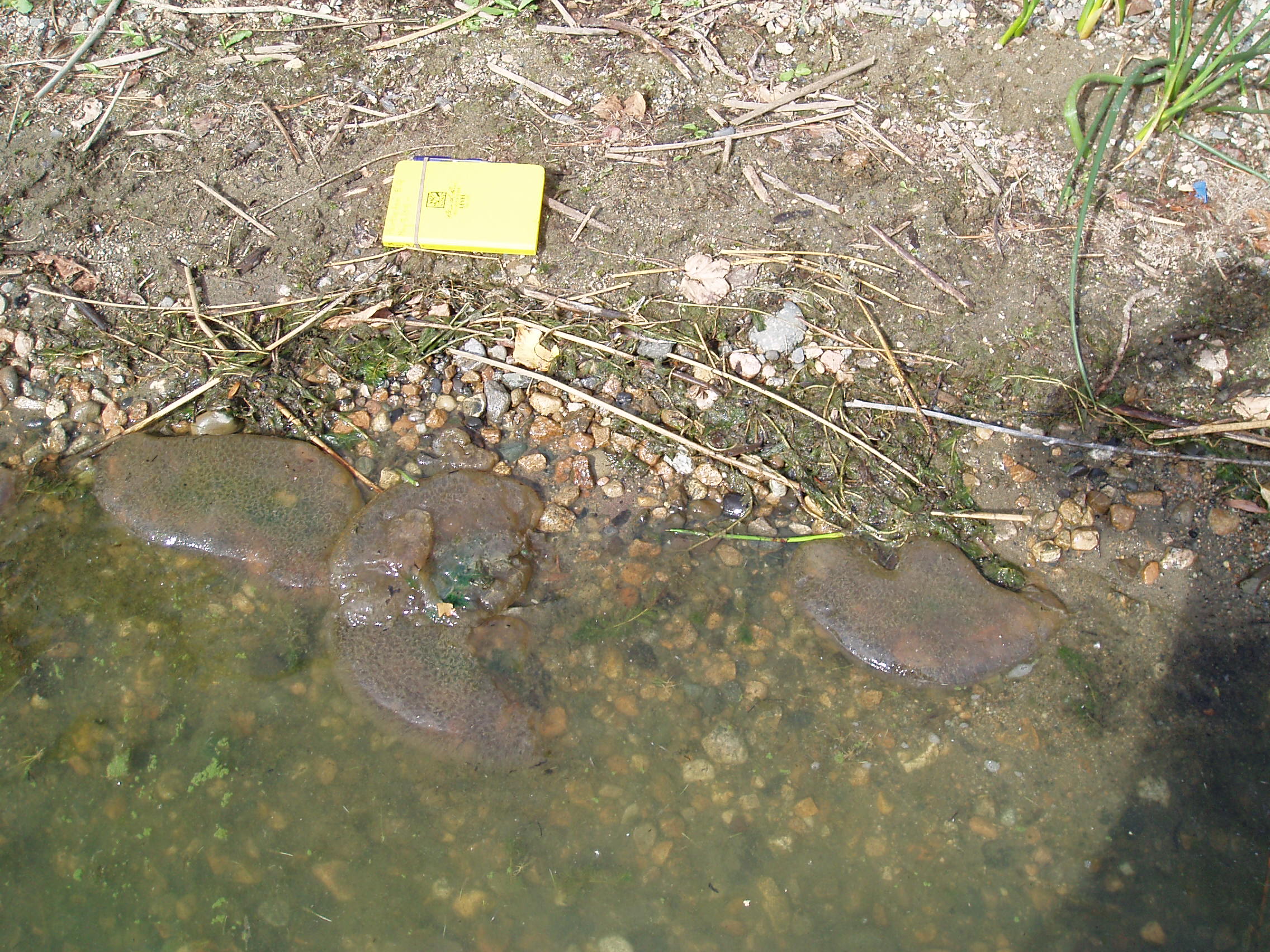
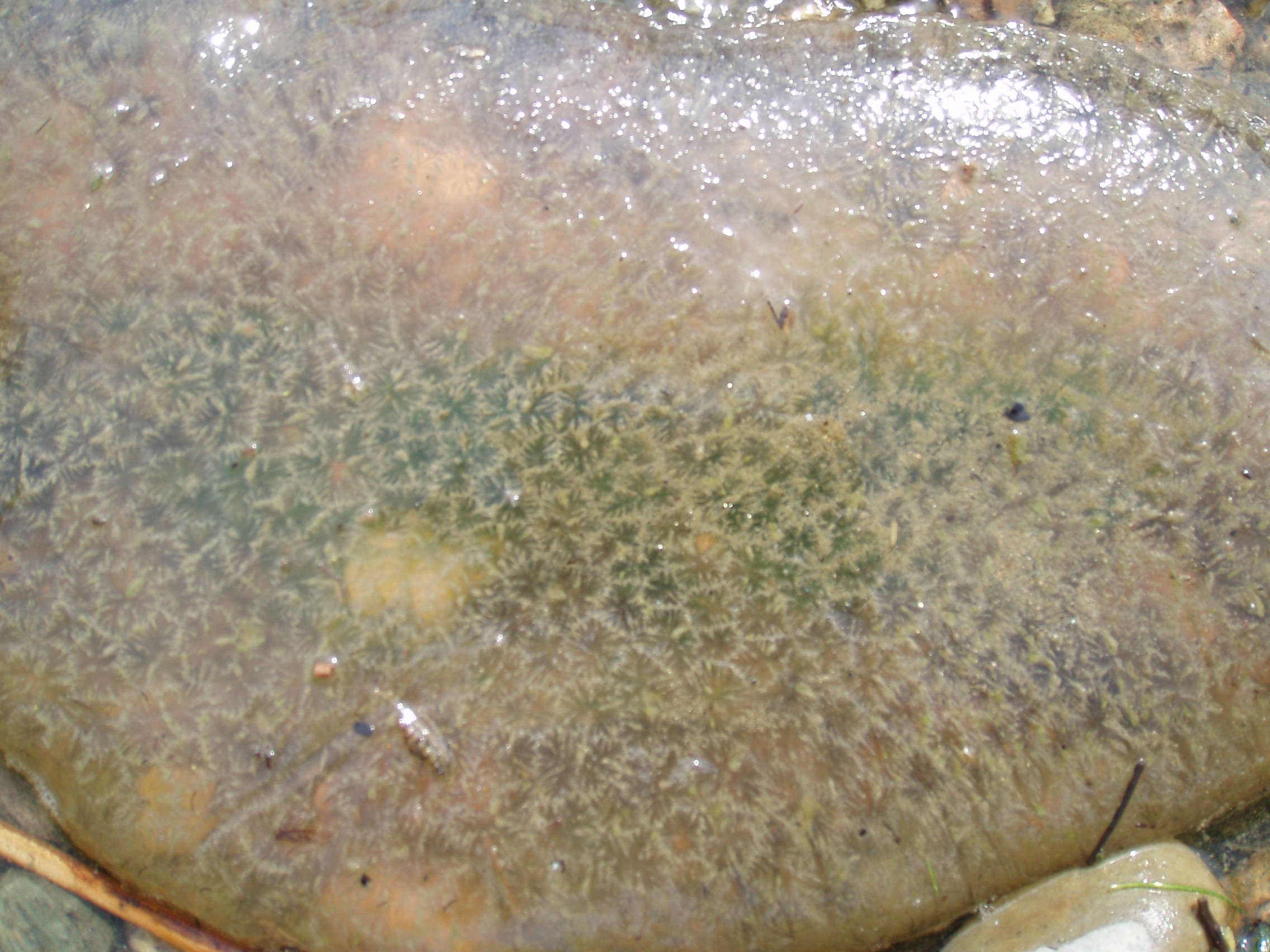
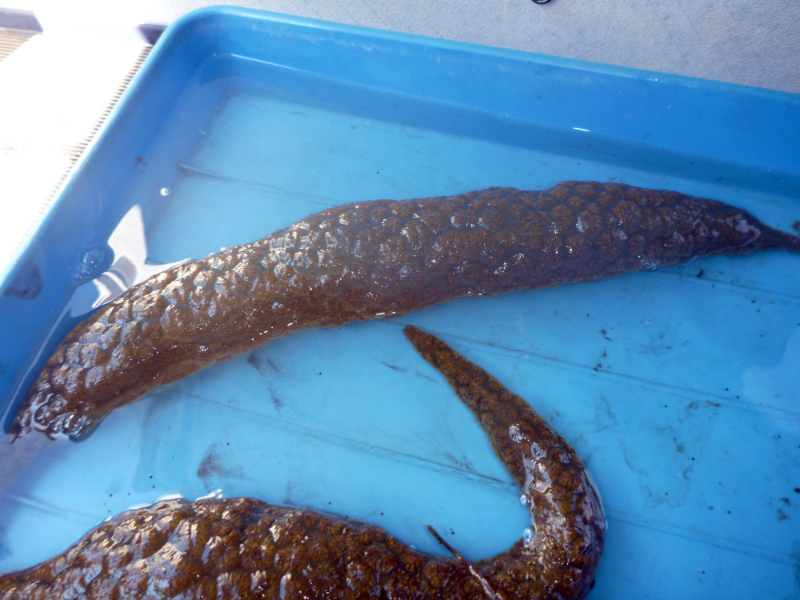
|
Bryozoan colonies
- Bryozoa, also called moss animals, a type of invertebrate animal that forms sedentary colonies.
- They are filter feeders and can form large gelatinous masses attached to aquatic plants or on the bottom of lakes.
- Most live in marine environments, but there are a few freshwater species.
|
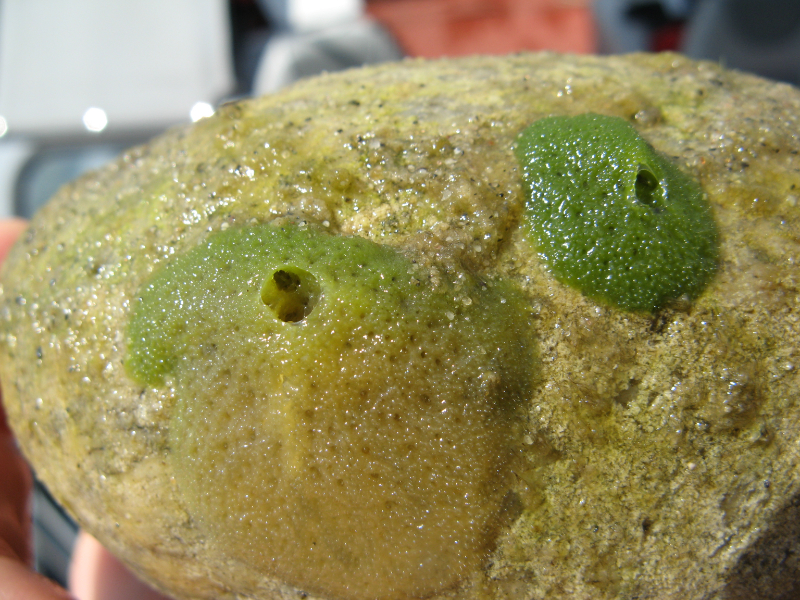
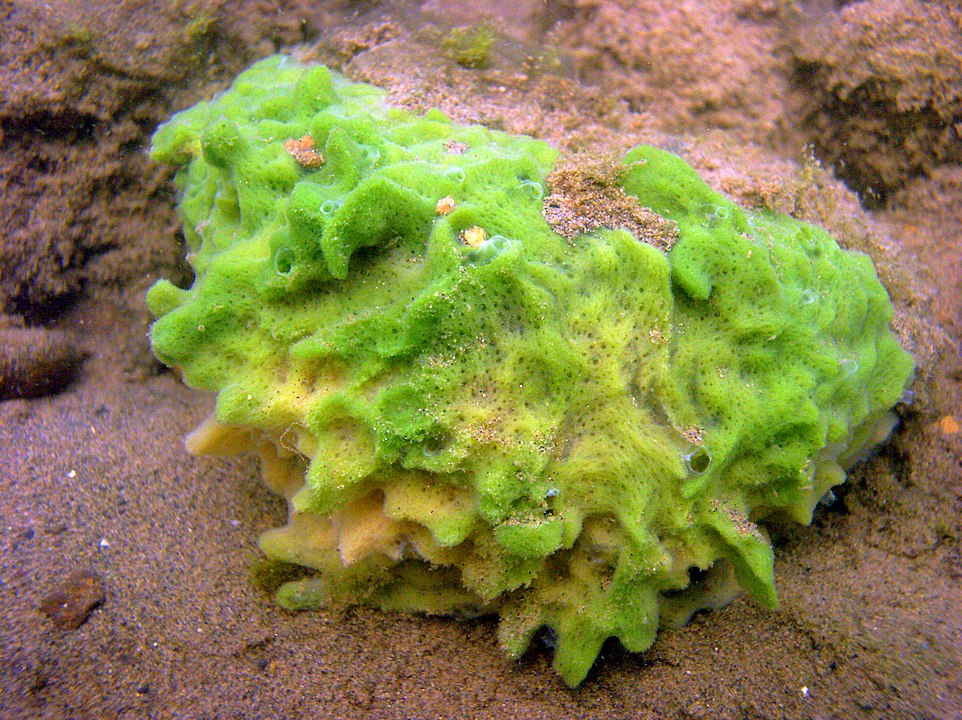 |
Freshwater sponges
- Sponges are multicellular invertebrate animals with multiple pores that allow water to circulate through them.
- They require constant water flow through their bodies to obtain food and oxygen and to remove waste.
- They live attached to underwater surfaces and remain fixed in place (usually to rocks).
- Most live in marine environments, but there are some freshwater species.
- They often appear green, as they have algae living in their tissue.
|
|
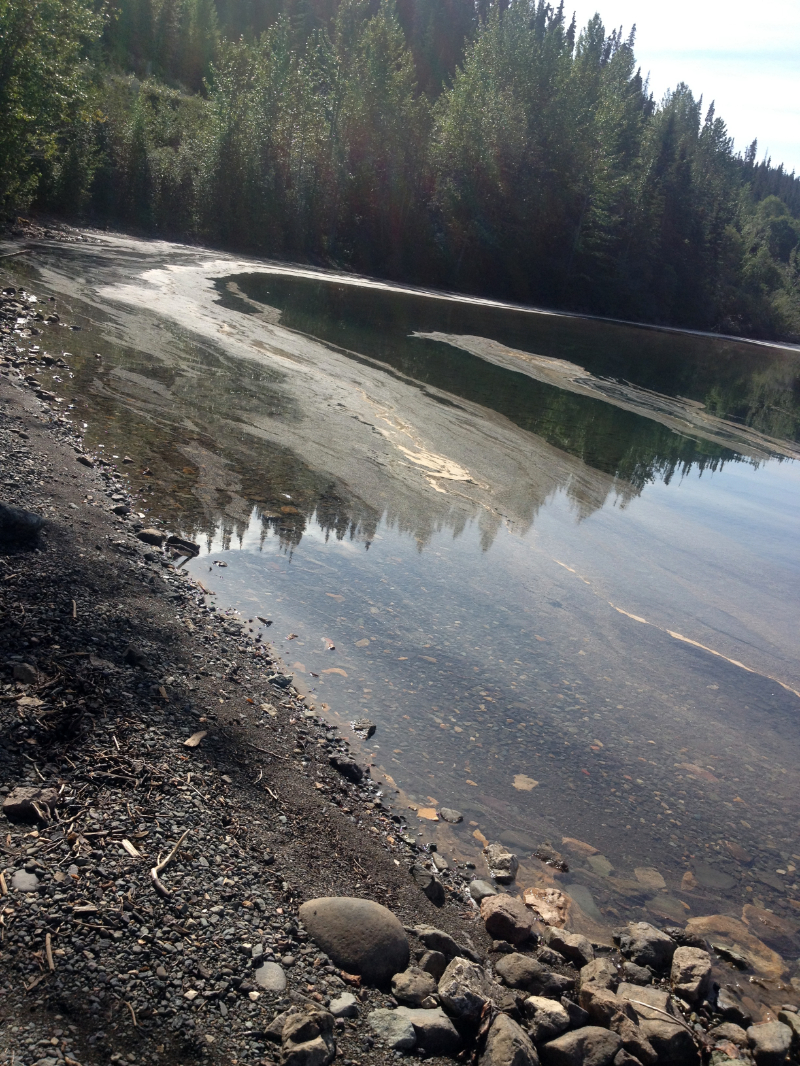
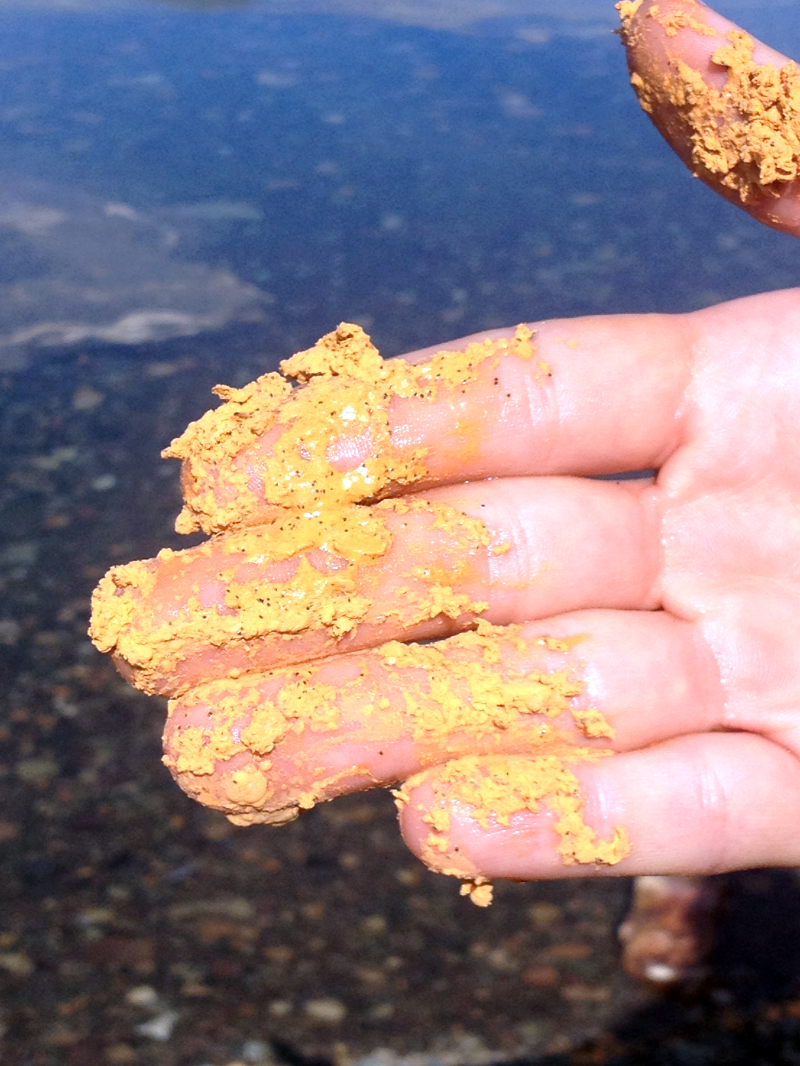
|
Pollen
- Pollen is a powdery substance produced by seed plants and trees for reproduction.
- It is usually yellowish, and often seen floating on the surface of lakes in windblown near shore areas.
- Plants and trees release pollen during species specific pollination periods, which are dictated by location and climate.
- Large pollination events, coupled with wind and wave action, can be mistaken for algae blooms in lakes.
- Pollen in water typically has no smell, and feels greasy when rubbed between the fingers.
|
|
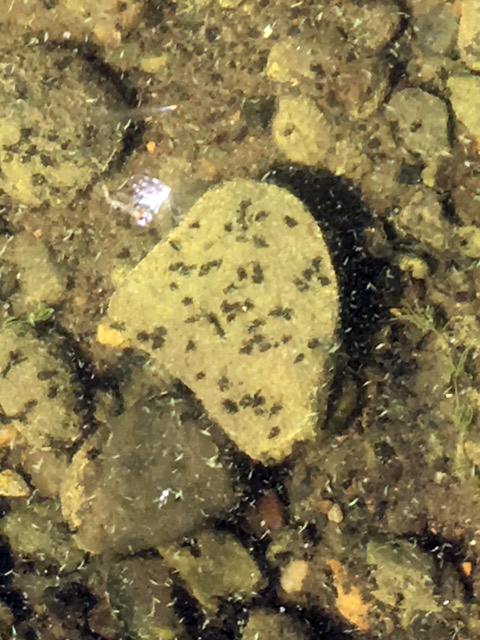
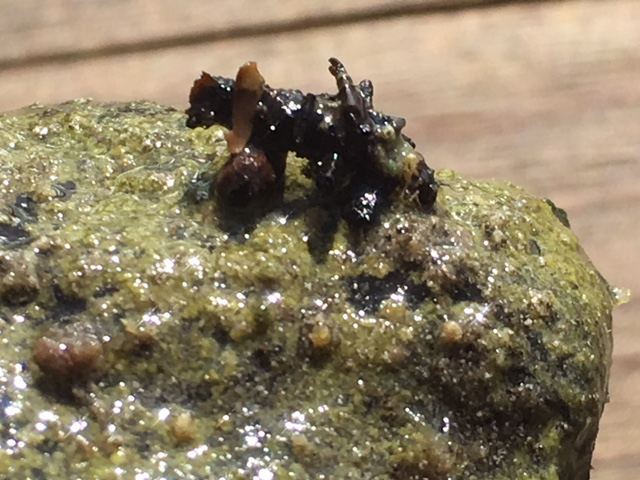
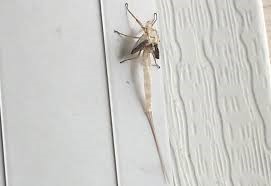
|
Insect casing
- There is a large group of insects that have an aquatic larval stage, while the adult stage is terrestrial.
- Some of these larvae use a silk that they make themselves, as well as sand particles and small woody debris, to form a casing around their very soft bodies to protect them from rough water and predators.
- When larva become adults they emerge from the water and moult, leaving behind the exoskeleton of their larval stage bodies, called exuviae.
- Most insect larvae eat algae and other plants and are a source of food for fish.
|
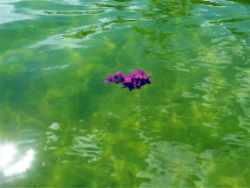
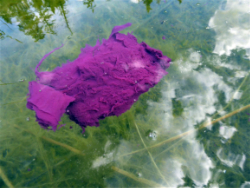
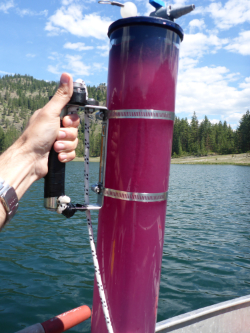
|
Purple Sulfur Bacteria
- Purple sulfur bacteria are part of a group of proteobacteria collectively referred to as purple bacteria
- Are capable of photosynthesis, but rather than using oxygen they utilize sulfur (sulfide) for their photosynthetic pathways
- Generally found in illuminated anoxic zones of lakes and other aquatic habitats, such as sulfur springs. These bacteria require anoxic conditions and cannot thrive in oxygenated environments.
- Can also be found and are a prominent component in intertidal microbial mats.
- Purple sulfur bacteria contribute to nutrient cycling in their environments and act as a source of food to other organisms.
|























